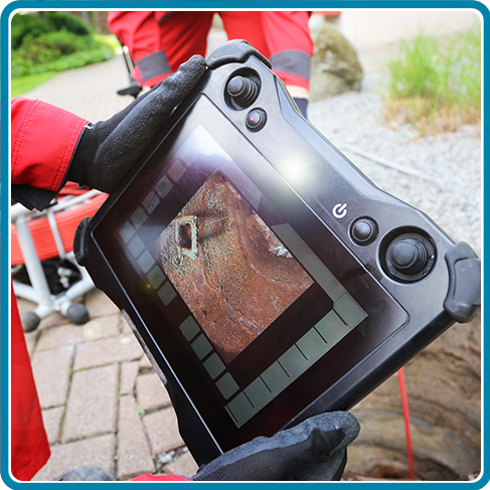

Sewer Inspections in Portland, OR
Sewer Camera Inspections in Portland Metro & Surrounding Areas
Sewer Renewal Specialists provides sewer inspections in Portland, OR, Portland Metro, and surrounding areas. We use state-of-the-art sewer camera inspection equipment for detailed inspections of your sewer line. We have more than 15 years of experience in our field and offer a full range of sewer services to meet every need.
Please contact us at (971) 803-5240 to schedule your sewer inspection.
How Long Does a Sewer Inspection Take?
The duration of a sewer inspection can vary depending on several factors, but at Sewer Renewal Specialists in Portland, we prioritize efficiency without compromising thoroughness. On average, a sewer inspection typically takes about 1 to 2 hours to complete.
Several factors influence the time required for the inspection:
- Pipe Length: The length of your sewer line plays a significant role. Longer lines naturally take more time to inspect thoroughly.
- Complexity: The complexity of your sewer system, including the presence of bends, junctions, or obstructions, can affect the inspection time.
- Access Points: The number and accessibility of inspection access points, such as cleanouts, also influence the duration.
- Technology Used: Our use of advanced sewer camera technology expedites the process, allowing for faster and more accurate inspections.
While the average inspection takes 1 to 2 hours, our priority is to provide a comprehensive assessment of your sewer system's condition. Rest assured that Sewer Renewal Specialists in Portland will work diligently to complete the inspection efficiently while ensuring that no potential issues are overlooked.
Reasons to Schedule a Sewer Inspection
There are a few reasons for sewer inspections in Portland, OR. If you are buying a house, you may wonder if you need a sewer line inspection. The answer is yes. Sewer inspections and audits should be a mandatory part of your house inspection checklist. When making inspection decisions, do not overlook the sewer line. The other main reason for scheduling sewer inspections is to detect damage and make decisions about repair or replacement.
Signs of a sewer problem include:
- Slow drains throughout the house
- Frequent clogs and backups
- A sewer odor
- Wet spots on the lawn
In extreme cases of a completely failed sewer line, you could have sewage backing up into your drains. If you have noticed any of these signs, you may want to schedule a sewer line inspection.
What Sewer Inspections Detect
A sewer line inspection can provide valuable information about the overall condition of the main sewer pipe. When buying a house, this can help avoid unpleasant surprises after moving in. If there is a problem with your sewer line, such as a blockage or damage to the pipe, a sewer inspection can detect the cause of the trouble, so decisions can be made about repair.
Sewer inspections can locate problems such as:
- Bellies or sagging – Low areas of the pipe, called a belly, allow water and solid waste to collect inside the pipe. This can result in poor flow, backups, or damage to the pipe.
- Offsets and broken joints – Offsets occur when older sections of pipe corrode or shift and separate. This can result in wastewater seeping into the soil and causing settlement and pipe breakdown.
- Tree roots – Small gaps or tiny holes in the pipe can allow tree roots to grow into the line. As the roots grow larger, the pipe can become clogged, crack, or break. Minor tree root intrusion can be cleared without extensive repair or pipe replacement.
- Collapsed pipes – When tree root intrusion becomes extensive, there is significant soil settlement, or the pipe corrodes with age, it can eventually collapse.
Sewer line inspections and audits are necessary for maintaining the health of your pipes. Catching sewer line problems early before they become bigger problems saves money and provides peace of mind.
Call to Arrange a Sewer Inspection
If you are planning to buy a home and need an inspection, suspect a problem with your sewer line, or just want to take a proactive approach to property maintenance, we offer reliable services for sewer inspections in Portland, OR.
If you need a sewer inspection, call (971) 803-5240 to book an appointment.

“My wife and I were very happy with our experience with Sewer Renewal Specialists.”
Brad S.

